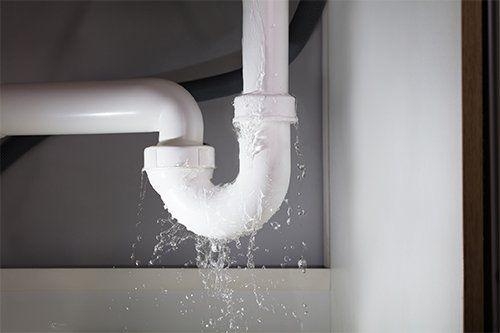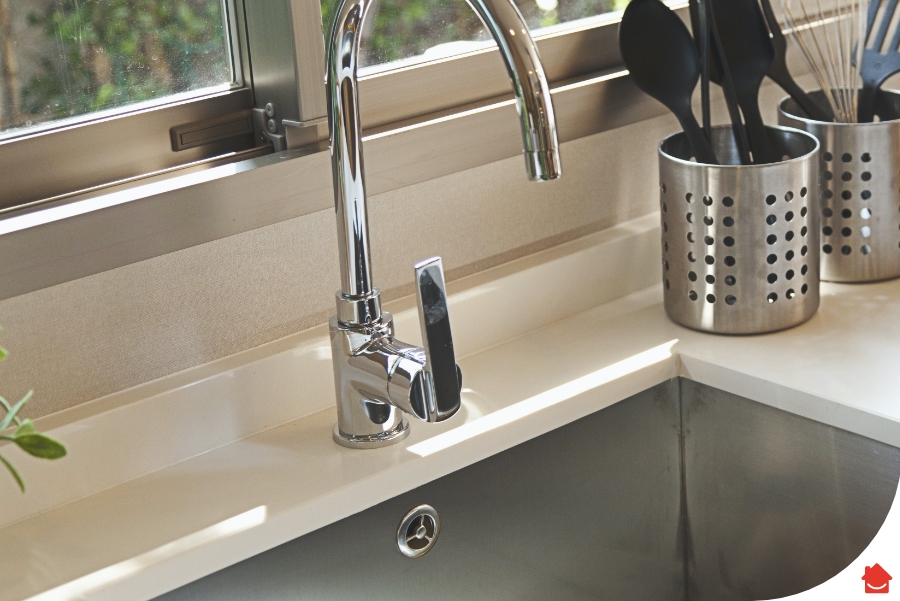Why does my kitchen sink pipe keeps coming loose?
Are you tired of constantly tightening the pipe beneath your kitchen sink? Do you find yourself constantly frustrated with the seemingly never-ending cycle of loosening and tightening? You’re not alone. This is a common problem that many homeowners face.
Your kitchen sink is one of the most frequently used areas in your home, and the pipes beneath it are constantly under pressure from water and waste. Over time, this can cause the pipes to become loose and disconnect, leading to leaks and water damage.
If you’ve been struggling with a loose kitchen sink pipe, there are several reasons why this may be happening. From incorrect installation to wear and tear, understanding the root cause of the problem is key to finding a solution. In this article, we’ll explore the common causes of a loose kitchen sink pipe and provide tips for preventing and fixing the issue.
Why does my kitchen sink pipe keeps coming loose?
A kitchen sink pipe that keeps coming loose can be a frustrating and common issue faced by many homeowners. Often a result of wear and tear or poor installation, a loose kitchen sink pipe can lead to water pooling, leaky sinks, and even broken pipes.

The constant tightening and loosening of the pipe can also damage the surrounding areas. Therefore, it’s necessary to identify and address the root cause of the problem to prevent any further damage to plumbing fixtures. In this article, we will discuss the reasons why your kitchen sink pipe keeps coming loose and provide some tips on how to fix it.
Causes of a Loose Kitchen Sink Pipe
A loose kitchen sink pipe can cause water leaks, drainage problems, and other issues that can damage cabinets, floors, and ceilings. Identifying the causes of a loose kitchen sink pipe can help you prevent or fix the problem effectively. Here are some common reasons why your kitchen sink pipe may keep coming loose:
1. Worn-out washers – The most common cause of a loose kitchen sink pipe is worn-out washers. These small rubber or nylon pieces seal the connections between the sink, drain, and trap, and prevent water from leaking out. Over time, however, they can deteriorate or lose their elasticity due to age, use, or exposure to chemicals, causing the connections to loosen.
2. Loose connections – Another possible cause of a loose kitchen sink pipe is loose connections. This can occur if the nuts or bolts that hold the pipes together are not tightened enough, or if they become loose due to vibrations, movement, or temperature changes.
3. Faulty installation – If your kitchen sink is relatively new or has been recently installed, the cause of a loose pipe may be a faulty installation. This can happen if the pipes are not aligned properly, the fittings are not compatible, or the materials are not suitable for your plumbing system.
4. Wrong type of pipe – Using the wrong type of pipe for your kitchen sink drain can also cause looseness. For example, if you use plastic pipes instead of PVC pipes, the connections may not fit tightly enough, or the pipes may warp or crack over time.
5. Stripped threads – If you use a pair of pliers or a regular wrench to tighten the connections too much, you may strip the threads and make the problem worse. This can cause leaks, cracks, or breaks in the pipes and fittings, and make them more difficult to repair or replace.
6. Corroded pipes – If your kitchen sink pipes are made of metal, they can corrode over time due to exposure to moisture, chemicals, or high acidity levels in the water. This can weaken the pipes and cause them to loosen, crack, or leak.
Precautionary measures and solutions:
To prevent or resolve a loose kitchen sink pipe, consider these precautionary measures and solutions:
1. Use the right materials – Make sure you use the correct type of pipe, fittings, washers, and clamps for your plumbing system. Consult a professional plumber or the manufacturer’s instructions for guidance.
2. Tighten the connections properly – Use a basin wrench or a specialized tool to tighten the connections just enough to create a snug fit without over-tightening them. Make sure you use slip joints to allow for some movement and flexibility.
3. Inspect the pipes regularly – Check your kitchen sink pipes and fittings periodically for signs of wear, corrosion, leaks, or damage. Replace any damaged or defective parts immediately.
4. Use pipe dope – Apply some pipe dope or Teflon tape to the threads of the connections to create a watertight seal and prevent them from coming loose.
5. Seek professional help – If your kitchen sink pipe keeps coming loose or you notice other issues such as water pooling, slow drainage, or a leaky sink, contact a professional plumber to diagnose and repair the problem.
By following these tips, you can keep your kitchen sink pipe tight and secure, and avoid costly repairs or replacements.
Solutions for a Loose Kitchen Sink Pipe
1. Tightening connections: One of the easiest ways to fix a loose kitchen sink pipe is to tighten the connections. Turn off the water supply, then use a basin wrench or a specialized tool to tighten the connections just enough to create a snug fit without over-tightening them. It is important to avoid over-tightening as it can cause stripped threads and make the problem worse.

2. Use slip joints: Another solution is to use slip joints that allow for some movement and flexibility. This can help prevent the pipes from becoming loose due to vibrations, temperature changes or movement. Slip joints are a great precautionary measure to take when installing new pipes or replacing old ones.
3. Replace worn-out washers: As mentioned earlier, worn-out washers are a common cause of a loose kitchen sink pipe. Replace any worn-out washers or other small rubber or nylon pieces with new ones. This can help seal the connections between the sink, drain, and trap and prevent water from leaking out.
4. Apply pipe dope or Teflon tape: Another solution is to apply pipe dope or Teflon tape to the threads of the connections. This can create a watertight seal and prevent them from coming loose. It is important to choose the right type of pipe dope or Teflon tape that is compatible with your plumbing system.
5. Inspect the pipes regularly: Regular inspections of your kitchen sink pipes and fittings can help detect any wear, damage, leaks or corrosion before they become big problems. It is important to fix any issues as soon as possible to prevent damage to your cabinets, floors or ceilings.
6. Seek professional help: If you are not confident in fixing a loose kitchen sink pipe yourself or if you notice other issues such as water pooling, slow drainage or a leaky sink, it is best to seek professional help. A professional plumber can diagnose and repair the problem effectively and efficiently.
By following these solutions and precautionary measures, you can prevent or fix a loose kitchen sink pipe effectively. Remember to use the right materials, tighten the connections properly, replace worn-out washers and inspect the pipes regularly to keep your plumbing system in good condition.
Meet Lila Robinson, an expert in the world of plumbing with a talent for delivering valuable insights and captivating articles on an array of plumbing topics. With years of experience handling complicated plumbing issues, Lila has become a go-to resource for homeowners and businesses alike.
Packing vast knowledge in plumbing tools and science, Lila creates a sense of community on her blog and social media accounts, engaging with readers from all walks of life. Her writing style is authentic, unique, and engaging, and she has an exceptional ability to break complex concepts into understandable ideas.
If you have encountered a plumbing issue, chances are Lila Robinson has conquered it. Her articles uncover the underlying problems behind some of the most unexpected plumbing problems, from tankless water heater error codes to drain snakes in vents.
Whether you’re a beginner or an experienced plumber, Lila Robinson’s blog has something for you. Follow her social media accounts to keep up-to-date with the latest posts and join the conversation.